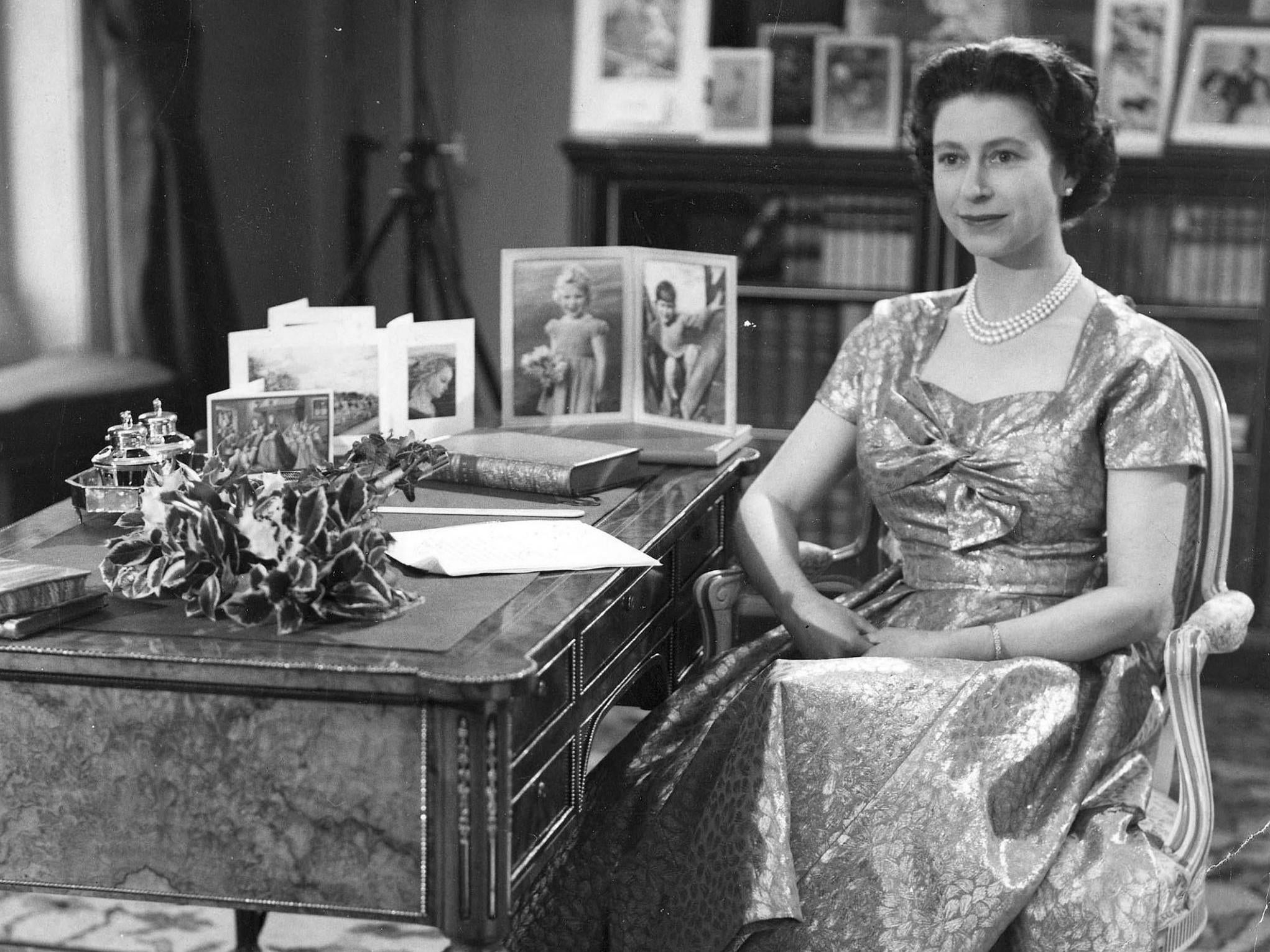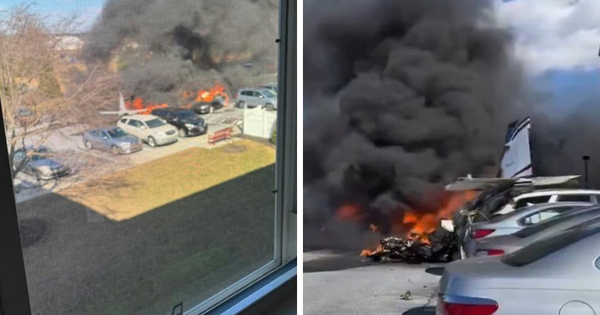Queen Elizabeth II will deliver her 66th Christmas message to the nation on 25 December.
The monarch first picked up the tradition commenced by her grandfather, King George V, in 1952. George himself had taken to the airwaves for the first time 20 years earlier to address the British public, finally taking BBC director-general John Reith up on an idea he had proposed as early as 1922.
The Queen’s first five Christmas Day speeches were likewise broadcast on radio but, in 1957, she agreed to try something new: television.
As depicted in the Netflix show The Crown, the royal was moved to overcome her anxiety about the new medium in the interest of showing a more human side to her character.
She had been stung by an editorial written by Lord Altrincham in The National and English Review, in which the peer had cruelly attacked her public speaking by saying: “The personality conveyed by the utterances which are put into her mouth is that of a priggish schoolgirl, captain of the hockey team, a prefect, and a recent candidate for confirmation.”
The speech was duly broadcast live on the BBC from the Long Library at Sandringham at 3.07pm on 25 December 1957, as a nation sat back to sleep off its lunch.
The Queen perched at her father’s desk surrounded by framed photographs of her family – a young Charles sitting in a tree is visible at her elbow – and was dressed in a gold lamé gown, pearl necklace and dark lipstick.
Her discomfort was there for all to see, no matter how hard she fought to resist wringing her hands.
Her grandfather’s first Christmas speech had been written by Rudyard Kipling. Elizabeth too had help from an admired novelist, with Daphne du Maurier providing suggestions. But the final draft actually came from her husband, Prince Philip.
“Happy Christmas. Twenty-five years ago my grandfather broadcast the first of these Christmas messages,” she began, before reflecting on the novelty of the new technology.
“Today is another landmark because television has made it possible for many of you to see me in your homes on Christmas Day. My own family often gather round to watch television as they are this moment, and that is how I imagine you now.”
The Queen then indirectly addressed Lord Altrincham’s criticism of her austere public image.
“It is inevitable that I should seem a rather remote figure to many of you. A successor to the kings and queens of history; someone whose face may be familiar in newspapers and films but who never really touches your personal lives. But now at least for a few minutes I welcome you to the peace of my own home.”
Reflecting on the pace of contemporary progress, Elizabeth diagnosed a moment of national uncertainty and cautioned the British people against “unthinking people who carelessly throw away ageless ideals as if they were old and outworn machinery”.

“They would have religion thrown aside, morality in personal and public life made meaningless, honesty counted as foolishness and self-interest set up in place of self-restraint,” she said, with a surprising degree of bite.
Defending “fundamental principles”, she urged courage in the face of “the subtle corruption of the cynics” and said: “It has always been easy to hate and destroy. To build and to cherish is much more difficult.”
Turning her attention away from moral guidance to affairs of the Commonwealth, she welcomed newly independent Ghana and Malaya and discussed her visit to Ottawa to open the Canadian parliament and other visits abroad to Portugal, France, Denmark and the US over the course of the year.
The Queen then took a moment to consider the changing nature of her own role within society.
“In the old days the monarch led his soldiers on the battlefield and his leadership at all times was close and personal,” she observed.
“Today things are very different. I cannot lead you into battle, I do not give you laws or administer justice but I can do something else, I can give you my heart and my devotion to these old islands and to all the peoples of our brotherhood of nations.”
Concluding by reading aloud an inspirational passage from John Bunyan’s The Pilgrim’s Progress (1678), she signed off by wishing her subjects “all the fun and enjoyment, and the peace of a very happy Christmas” with a beaming smile.
The Queen would broadcast live on Christmas Day twice more before a switch to pre-recording at Buckingham Palace was made in 1960, allowing for mistakes to be corrected and for copies to be sent overseas in advance. The first colour version of her Christmas speech was aired on 25 December 1967.
Watching the annual broadcast became a tradition with many families and interest peaked in 1980, as Charles and Diana Spencer’s wedding approached, with 28m viewers tuning in.
Viewing figures are now closer to 8m but the Windsors have worked hard to keep up with changing times, making the Queen’s Christmas speech available as a podcast, broadcasting in 3D and streaming it on YouTube and Facebook.
“In many ways, the evolution of the Christmas message mirrors the royal family’s struggle to transform into a modern monarchy – to balance their roles as iconic figureheads with the insatiable thirst for information about their lives and relationships,” observed Kate Frost of Town & Country.
The Christmas broadcast continues to play a crucial role in building a relationship between the royals and the British people, something the Queen understood instinctively as early as 1957.







